- Home
- Tom Clancy
Shadow Warriors: Inside the Special Forces Page 11
Shadow Warriors: Inside the Special Forces Read online
Page 11
Previously, however, he had come close to shooting his military career in the foot.
Always outspoken, Yarborough had openly questioned his division commander’s handling of the massive airborne assault into Sicily that had resulted in many transports getting shot down, with great loss of life. His commander, then—Major General Matthew Ridgeway, was not pleased with his subordinate’s outburst and relieved him of his command. Fortunately, Ridgeway’s superior, then-Lieutenant General Mark W. Clark, the 5th Army commander, liked Yarborough and saw promise in the rash young man. Clark gave him a temporary staff job, and later another fighting command.
In time, Yarborough and Ridgeway became good friends, and in fact, Yarborough came to realize that Ridgeway had done what was necessary when he’d ordered the assault. It was like with Eisenhower and D Day. The attack had to be so overwhelming that it would prevail despite the staggering losses. It is every commander’s nightmare—but it was a powerful lesson for young Yarborough.
After the war, he was sent to Vienna as the provost marshal of U.S. forces in Austria and provost marshal in Vienna. The job resembled a police chief’s, but also involved cooperation with the equivalent officers of the three other occupying powers: England, France, and the USSR. It proved to be Yarborough’s first introduction to what was later called “civil affairs.”
Since the official mission of the four occupying powers was to restore civil order and the rule of law, Yarborough grew interested in how the occupying troops might be disrupting that process—by, for example, criminal activities. To that end, he initiated a statistical study showing the nationalities responsible for the greatest number of crimes and the nature of those crimes. He then published regularly a booklet showing the curves of murder, rape, theft, arson, black market, and so on.
The results were fascinating. The Russians committed by far the most crimes, followed by the French, the Americans, and then the British.
There were a lot of factors. For one, the nationalities that had suffered most under the Germans and Austrians were hardly eager to protect German or Austrian legal rights. But it was equally true that the kinds of soldiers in occupation had a lot to do with how well they conducted themselves. The American troops that had been in combat were fairly well-behaved and responsive to discipline, but when their replacements began to arrive to take over the occupation, discipline began to collapse and crime rates began to rise.
The Russians, it seems, screened their soldiers not at all. In fact, as Yarborough learned from his Russian counterpart, who became a good friend, it was doubtful if many of the Russian commanders even knew where their people were. Their comings and goings made a mockery of regulations.
Yarborough tried to fix the American part of this situation several times. In his view, Vienna was not just an occupied capital; it was a major, politically charged test case, the success or failure of which could determine the future political direction taken by a great part of Europe. It seemed to him the United States should send representatives who would present the country in a good light, people who would create positive psychological leverage.
However, when he went to his superiors with this suggestion, he was told in no uncertain terms to forget it. He’d have to take his share of people with everybody else—the Army way—and leave the rest to leadership. This was, as he put it, “the old answer.”
A new answer was needed: Only picked men should be allowed in that kind of arena. In years to come, he took this insight to other politically charged environments such as Vietnam, Laos, Cambodia, and Thailand.
In Vienna (and later in Southeast Asia), civilians had high expectations for the Americans who had appeared among them. They had status and stature. They represented a vast, powerful country; they were there to help. If these expectations were going to be realized, then the old Army way wasn’t going to work.
“Ordinary” soldiers were not up to the job at hand. “Special” soldiers were needed.
Bill Yarborough lost that battle. But the point lodged in his mind.
His next years followed the normal, and not very exciting, path expected of midlevel Army officers. He graduated from the British Staff College in Camberley, England, in 1951, then spent the next two years as a staff officer in London representing the U.S. Joint Chiefs of Staff on the project to construct the framework for the North Atlantic Treaty Organization. There he met and befriended a man who would come to have a large influence on Special Forces, Roger Hilsman. Another West Point graduate, and a World War II guerrilla fighter with Merrill’s Marauders in Burma, Hilsman later became the State Department’s head of intelligence, then Assistant Secretary of State for Far Eastern Affairs during the Kennedy years, and one of Kennedy’s chief foreign policy advisers. More than anyone else, Hilsman was the Kennedy adviser responsible for his interest in irregular warfare.
After leaving England, Yarborough attended the Army War College and remained there on the faculty for two years after graduation. During that time, he made a study of the various forms future wars might take, including guerrilla war. In connection with that study, he visited the Special Forces at Fort Bragg, then under the command of Lieutenant Colonel Edson D. Raff, another pioneer paratrooper and veteran of the 1942 North African invasion. At Special Forces Headquarters, Yarborough got a VIP briefing on their mission and capabilities, but despite Raff’s enthusiasm, he was not much impressed with what he saw: During a big war, he concluded, Special Forces might have some influence on guerrillas and orient them to our cause, but it would be a mere sideshow.
In 1956, he was sent to Cambodia, as Deputy Chief of the Military Assistance Advisory Group, where he spent a great deal of time in the field with Cambodian troops—another enlightening experience (he loved Cambodia). He was impressed, first of all, with the physical difficulties of waging conventional war in that environment, and then with the Cambodian soldiers’ ability to exist and thrive in that environment nevertheless.
He tells about it:
In 1956, General Ciccolella and I, serving on the MAG there, made several trips to the eastern provinces. At one time we went all the way from Phnom Penh over to Ban Me Thuot, and through a road the French had carved out, now overgrown. The rusting machinery was still there, and along the border areas the forces on both sides [Communist and anti-Communist] had met and recoiled, I guess, because there was no evidence of military activity along the border between Cambodia and Vietnam; hut when one got inside the boundaries of Vietnam, fortifications looked over most logical approaches.
The going in those two provinces was very difficult, especially in the rainy season. On one of our trips, we got caught in torrential rains.
We had with us a small contingent of Cambodians, a three-quarter-ton truck, two jeeps, and a trailer. Darkness fell, quickly, as it does in the tropics; and the road we were on began to disappear under water. On each side of us was nothing but flat land, and 1 began to feel desperate. Not only was it possible for us to down, but we could also flounder around in this flooded and featureless landscape and get completely lost, which was not acceptable either.
So what to do?
Well, just before the last vestiges of light were gone, we found a little mound—a small hill—and we pulled our equipment up onto it as the rains continued to pelt down on us. Then we deployed our sleeping bags under what cover we could find and tried to get a little rest. Next morning we’d see what else we could do.
About three in the morning, we heard sounds from the direction we’d just come from. Soon we could make out blinking through the rain—a flashlight here and there—and the sounds a mule train might make, coming up the road.
About half an hour later a young Cambodian lieutenant came up, wet to the skin; he saluted and then asked: “Est-ce que je peux vous aider?”—Can I help you out?
And we said: “Well, who are you? Where are you going? How did you get here?”
“We’re going to the border post along the frontier,” he said, “and we’re just movi
ng through the mud.”
“How are you doing it?”
He showed us:
What they were doing was using a winch on the front of a three-quarter-ton truck. They’d attach a line onto a tree and winch forward about twenty-five or thirty feet. And then they’d repeat the process. They’d moved all the way along the road this way.
“Are you going to stop here for the night?” we asked. “Or wait until the rain stops?”
“Oh no, there’s a much better place on up ahead. We’ll go on up there.” And then he said, “Can we pull you along?”
“No, we’ll wait for dawn, ” I said.
So when dawn came, we moved out. The waters had receded a little bit, and you could see where you were going.
About ten miles ahead, we came to the encampment where the Cambodian lieutenant had by now laid out his command post gear. By that time, the Cambodian officers had taken off their uniforms and changed into their “sampots”—a wrap-around garment—and the soldier orderlies were serving them. They were completely at home in that environment ... really good jungle and frontier soldiers.
Some time later, we finally got to the frontier post that was our destination. It was like a fort in our Old West. It had sharpened stakes around it to keep out the primitive hill tribes they called the “Mnongs” and the Vietnamese called the “Montagnards.” In the morning, the bugle would sound, the flag would go up, and the Khmer soldiers would go out on the town (which was nearby), trading with zircons, just like our frontier soldiers trading with the Indians. At night they came back inside the fort.
well, my feeling was that Cambodians would make superb irregular warfare soldiers, the guerrilla warfare type.
The seed of another Special Forces mission was planted.
In 1957, Yarborough took command of the 7th Infantry Regiment and moved it to Germany from Fort Benning, Georgia. From there he was sent to Counterintelligence in Europe ... and then to Fort Bragg, to command Special Forces.
NEW FORM OF WAR
John Kennedy’s thoughts on unconventional warfare were a response to very real worries back in the 1950s and 60s—the seemingly relentless and insidious spread of the “Communist Empire” and the sudden collapse of colonialism.
Colonialism—the rule by Western powers over Third World peoples for the sake of their economic exploitation—had lasted several centuries. Its death (except in the Soviet version) took approximately two decades, the years following the end of the Second World War.
Sadly, the departure of the old colonial masters brought few blessings to the newly independent Third World nations; the old masters left behind very few capable indigenous leaders and very little for them to work with. The “white man’s burden” was a never-delivered promise. In most newly decolonized Third World nations, the infrastructures necessary to maintain a society as a going concern were lacking—transportation, education, health care, banks and investment, and most of all, enforceable laws and an effective justice system to protect them. More often than not, the emerging Third World leaders were primarily interested in personal aggrandizement and wealth rather than in the long, hard toil needed to build a viable nation.
The citizens of those nations, meanwhile, wanted what everybody else wants—better lives for themselves and their children. “We’ve thrown the old masters out,” they argued, sensibly (and often after long, hard struggles, pain, and sacrifice). “Now we deserve to see the fruits of our victory.”
When the fruits didn’t immediately appear—and in fact seemed to recede ever further into a future ever more squalid and rotten with corruption—its not hard to imagine their dismay, nor to see how quickly their mood turned nasty.
Naturally, this potentially explosive situation became a major arena in the battle between the Communist powers and the West. At stake were power and influence over a great part of the world’s population, as well as control over a vast wealth of natural resources.
The more ideologically driven Communists started out with a number of advantages in this contest: They had no link with the old, discredited colonial powers, and they promised heaven on earth ... and soon. The Chinese, in particular, had also developed effective techniques for transforming the dismay, discontent, and rage against the failed or failing Third World governments into mechanisms that seriously threatened those systems.
The Western powers (the United States in particular, as their leader) started fighting with serious disadvantages. Communism represented the bright and shiny future. The democracies, and capitalism, represented the discredited past. Nor were the democracies especially skillful in the PSYOPs part of the struggle. Democratic capitalism and the rule of law, adapted to the cultural requirements and traditions of each society, remains the best hope for most of the world’s people. The West did not do a very good job selling that truth.
Meanwhile, Mao Tse-tung’s victory in China showed the way for others: Dismay and discontent can be transformed into dissent and dissidence. Dissidence can be transformed into subversion and terrorism. Subversion and terrorism can be transformed into active insurrection. Insurrection can be transformed into guerrilla war. And in time, guerrilla war can be transformed into conventional military action—but only when the guerrillas feel totally confident that the outcome favors them.
Each stage in the process supports actions aimed at exploiting the ruling system’s weaknesses. The aim is not direct confrontation, but to cause a rotting from within. Agents corrupt or “turn” politicians. Other agents take over labor unions, student groups, farmers’ collectives; they infiltrate the media, the military, and the police—all as vehicles for propaganda and subversion.
The revolutionaries do not expect to destroy the system in a single blow or series of blows. Any weakness will do—economic, political, psychological, physical. In fact, the greatest vulnerability of any system is often psychological—will. As a result, eroding the will of the enemy to continue the struggle is always a chief aim of the underground opposition. This can take a very long time—years, even decades. The subversive leadership, as Mao has taught, must always remain patient.
It follows that each stage is supported by the ones before it, and each stage remains active even as new ones arise. At the same time, the various elements and stages of the subversive underground are protected from detection by means of a complex cell structure. Chop off a finger, but the body remains, and a new finger grows.
It follows as well that all of these elements depend on near-flawless intelligence, and on the whole they get it. Their eyes are everywhere; they know whatever the people know.
It follows, finally, that the more active stages depend almost totally on the support of the people—for supplies, intelligence, money, and recruits. Very often this support comes at great risk and considerable cost. The governing bodies—like the Germans in occupied France—look for payback opportunities, or else simply for ways to send a strong message. The more threatened they become, the more likely they are to flail about violently—to the psychological advantage of the revolution.
Of course, standing up under such assaults requires strong, highly motivated people.
From this comes Mao’s famous sea and fish image. The people are the sea; the revolutionaries arc the fish. The sea supports the fish. It also hides them from predators. The revolutionaries only want to show themselves when they are not themselves vulnerable. Then they fade back into the sea, or the mountains or the jungle.
Of course, the revolutionaries almost always received support from one or another Communist power. It was a war by proxy.
Meanwhile, all too often, Third World leaders sold their services to the highest bidder, or to whichever bidder was handy at the moment.
This was President Kennedy’s new kind of war. It went under many names—revolution, peoples’ war, subterranean war, multidimensional war, slow-burn war, war in the shadows. All of these names were useful, and described a significant aspect of the struggle.
The focus on concealment
and complexity, however, points to a hard but basic truth: The old way of fighting wars simply did not work. You couldn’t just send in the cavalry, or an armored corps. You could bomb a people back into the Stone Age, and their children would come out of their holes, throw stones, and vanish back into the holes.
Where’s the enemy? Who are we actually fighting? When we take a piece of territory, do we hold anything worth holding?
The President had it right: A new kind of fighting force was required. This force had to know guerrillas inside and out—how they lived, how they fought, how they swam in the sea of the people. The Bank-Volckmann-McClure Special Forces had no problems there, but skill at behind-the-lines sabotage and running around with guerrillas was far from enough. For the early Special Forces, guerrillas and partisans were expected to be our friends. A reorientation was needed when guerrillas became our enemies. It wasn’t a gigantic reorientation, but attitudes had to change and new skills had to be learned.
For one thing, you couldn’t begin to uproot guerrillas without at the same time understanding and attacking the shadowy mechanisms that spawned and sustained them—the vast network of subversion, terror, support, and intelligence. But doing so without utterly wiping out the very freedoms that the United States was trying to preserve and promote was a daunting task.
Nor was it easy to go into somebody else’s home and set their house in order. Sovereign states consider internal subversion a very touchy matter. They are not eager to give foreigners access to the mechanisms that support it. In fact, the governments of these states are often themselves diseased. The cure proposed by the revolutionaries may well be the wrong cure, yet their cause may be just.

 Changing of the Guard
Changing of the Guard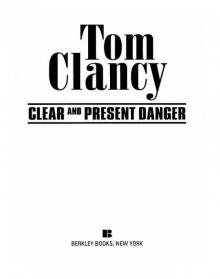 Clear and Present Danger
Clear and Present Danger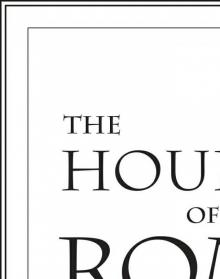 Hounds of Rome
Hounds of Rome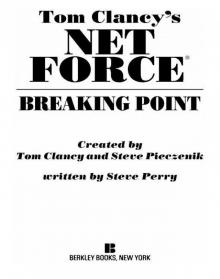 Breaking Point
Breaking Point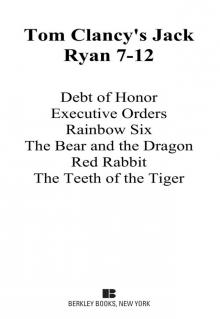 Tom Clancy's Jack Ryan Books 7-12
Tom Clancy's Jack Ryan Books 7-12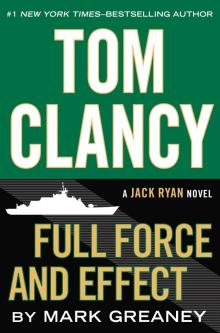 Full Force and Effect
Full Force and Effect The Archimedes Effect
The Archimedes Effect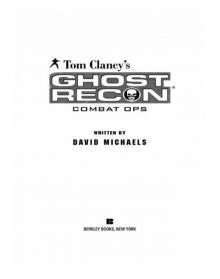 Combat Ops
Combat Ops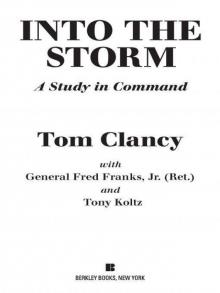 Into the Storm: On the Ground in Iraq
Into the Storm: On the Ground in Iraq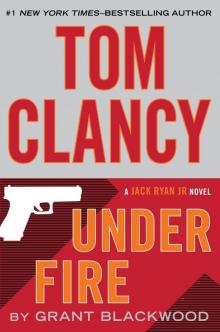 Under Fire
Under Fire Point of Impact
Point of Impact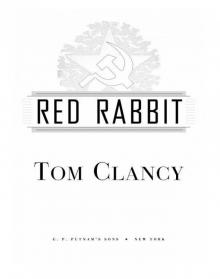 Red Rabbit
Red Rabbit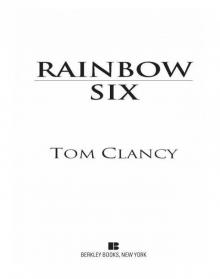 Rainbow Six
Rainbow Six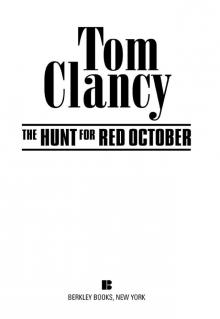 The Hunt for Red October
The Hunt for Red October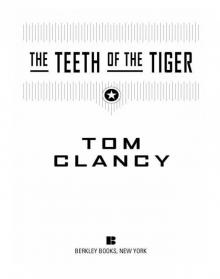 The Teeth of the Tiger
The Teeth of the Tiger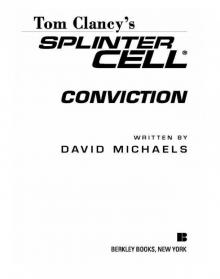 Conviction (2009)
Conviction (2009)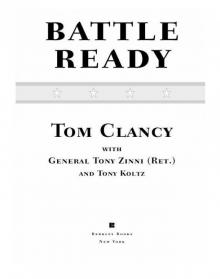 Battle Ready
Battle Ready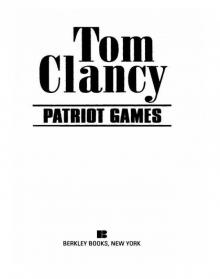 Patriot Games
Patriot Games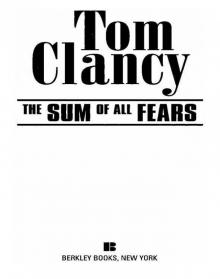 The Sum of All Fears
The Sum of All Fears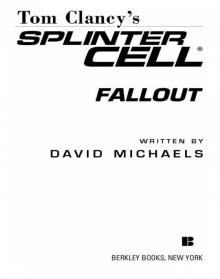 Fallout (2007)
Fallout (2007)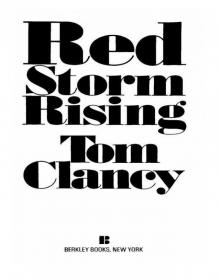 Red Storm Rising
Red Storm Rising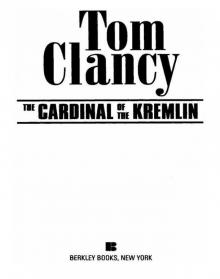 The Cardinal of the Kremlin
The Cardinal of the Kremlin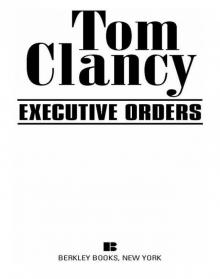 Executive Orders
Executive Orders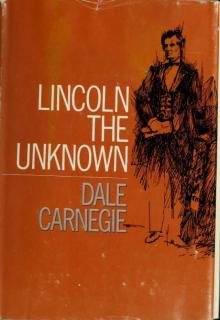 Lincoln, the unknown
Lincoln, the unknown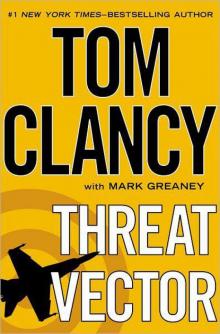 Threat Vector
Threat Vector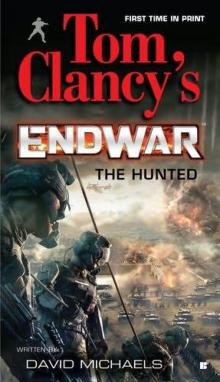 The Hunted
The Hunted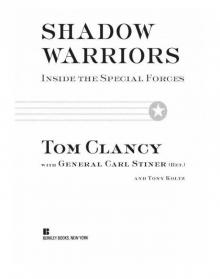 Shadow Warriors: Inside the Special Forces
Shadow Warriors: Inside the Special Forces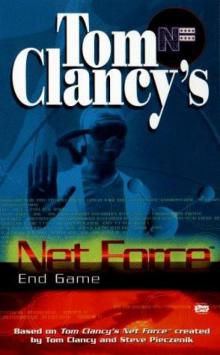 End Game
End Game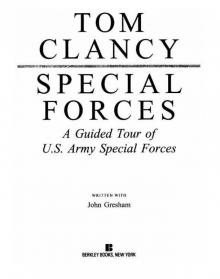 Special Forces: A Guided Tour of U.S. Army Special Forces
Special Forces: A Guided Tour of U.S. Army Special Forces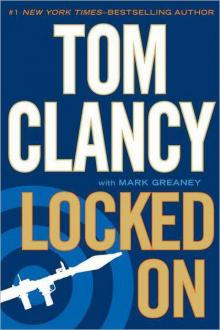 Locked On
Locked On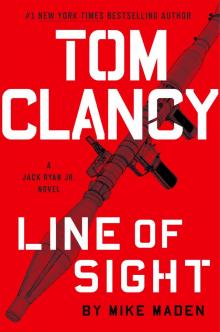 Line of Sight
Line of Sight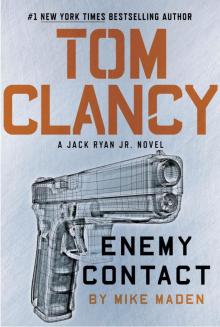 Tom Clancy Enemy Contact - Mike Maden
Tom Clancy Enemy Contact - Mike Maden Fighter Wing: A Guided Tour of an Air Force Combat Wing
Fighter Wing: A Guided Tour of an Air Force Combat Wing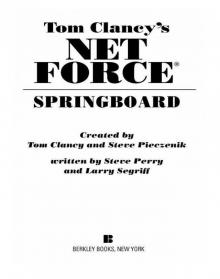 Springboard
Springboard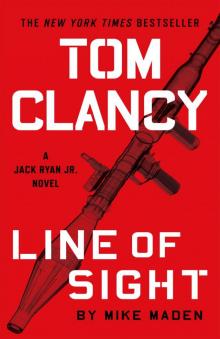 Line of Sight - Mike Maden
Line of Sight - Mike Maden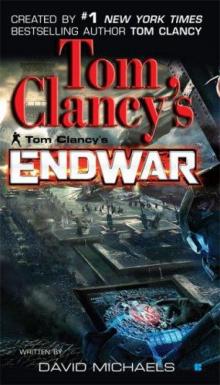 EndWar
EndWar Dead or Alive
Dead or Alive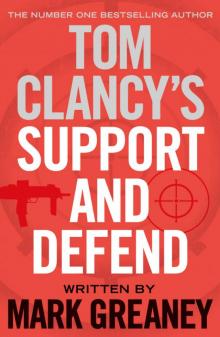 Tom Clancy Support and Defend
Tom Clancy Support and Defend Checkmate
Checkmate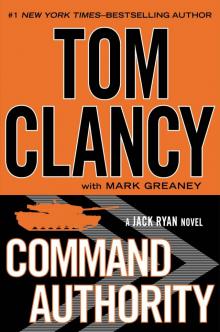 Command Authority
Command Authority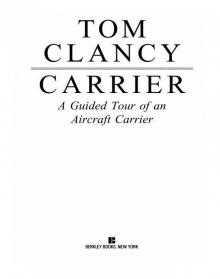 Carrier: A Guided Tour of an Aircraft Carrier
Carrier: A Guided Tour of an Aircraft Carrier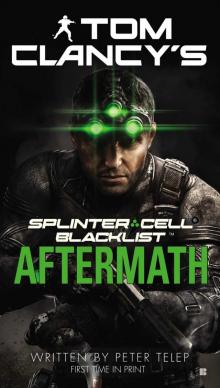 Blacklist Aftermath
Blacklist Aftermath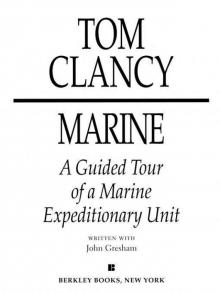 Marine: A Guided Tour of a Marine Expeditionary Unit
Marine: A Guided Tour of a Marine Expeditionary Unit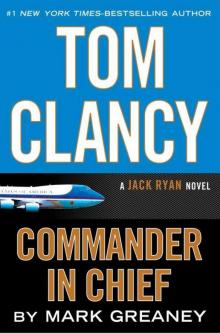 Commander-In-Chief
Commander-In-Chief Armored Cav: A Guided Tour of an Armored Cavalry Regiment
Armored Cav: A Guided Tour of an Armored Cavalry Regiment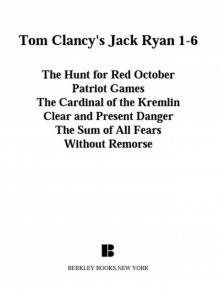 Tom Clancy's Jack Ryan Books 1-6
Tom Clancy's Jack Ryan Books 1-6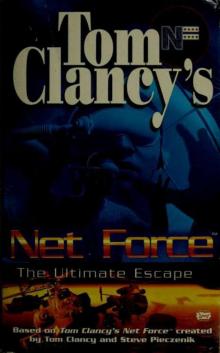 The Ultimate Escape
The Ultimate Escape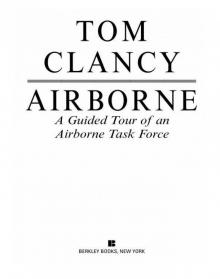 Airborne: A Guided Tour of an Airborne Task Force
Airborne: A Guided Tour of an Airborne Task Force Debt of Honor
Debt of Honor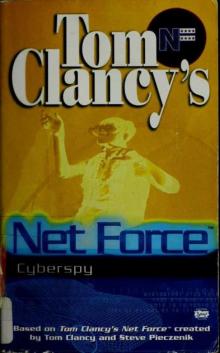 Cyberspy
Cyberspy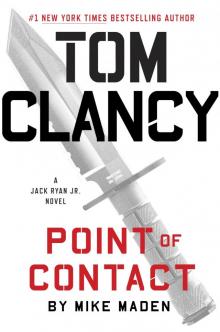 Point of Contact
Point of Contact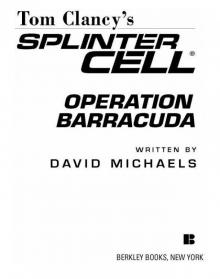 Operation Barracuda (2005)
Operation Barracuda (2005)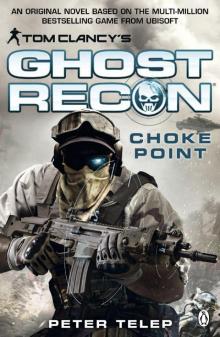 Choke Point
Choke Point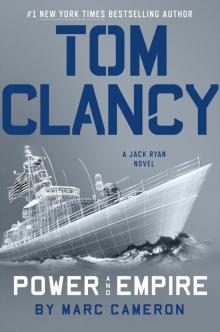 Power and Empire
Power and Empire Every Man a Tiger: The Gulf War Air Campaign
Every Man a Tiger: The Gulf War Air Campaign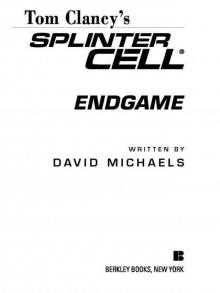 Endgame (1998)
Endgame (1998)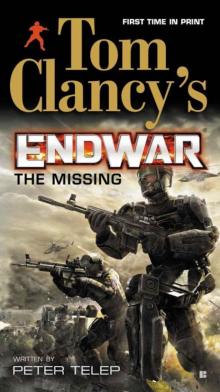 EndWar: The Missing
EndWar: The Missing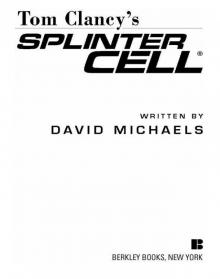 Splinter Cell (2004)
Splinter Cell (2004)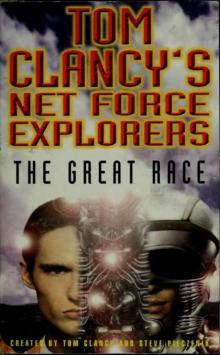 The Great Race
The Great Race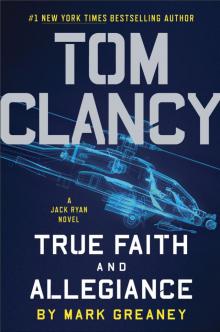 True Faith and Allegiance
True Faith and Allegiance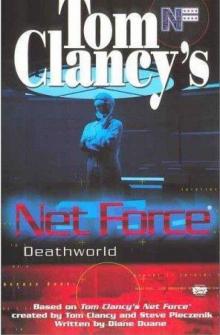 Deathworld
Deathworld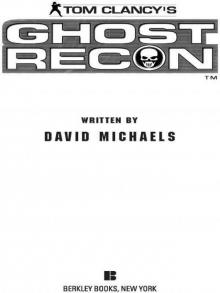 Ghost Recon (2008)
Ghost Recon (2008)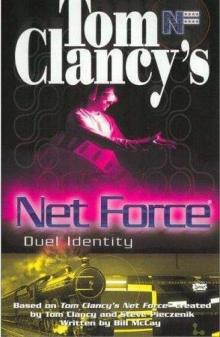 Duel Identity
Duel Identity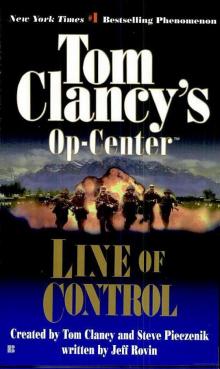 Line of Control o-8
Line of Control o-8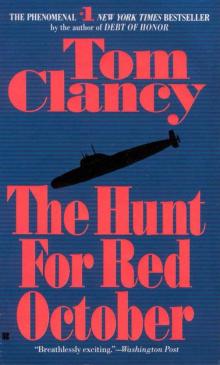 The Hunt for Red October jr-3
The Hunt for Red October jr-3 Hidden Agendas nf-2
Hidden Agendas nf-2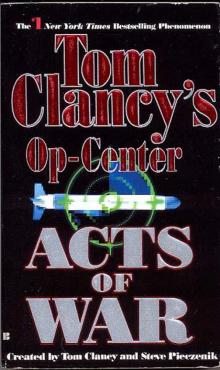 Acts of War oc-4
Acts of War oc-4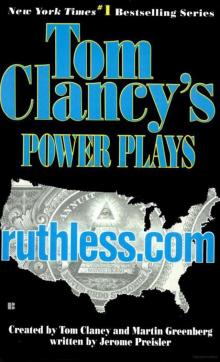 Ruthless.Com pp-2
Ruthless.Com pp-2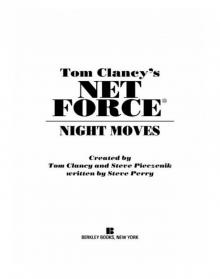 Night Moves
Night Moves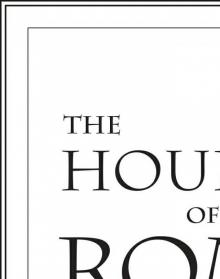 The Hounds of Rome - Mystery of a Fugitive Priest
The Hounds of Rome - Mystery of a Fugitive Priest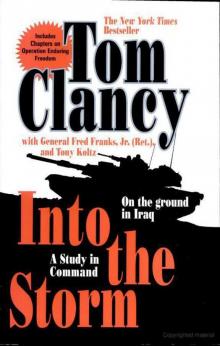 Into the Storm: On the Ground in Iraq sic-1
Into the Storm: On the Ground in Iraq sic-1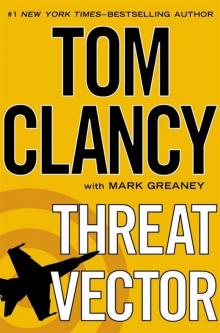 Threat Vector jrj-4
Threat Vector jrj-4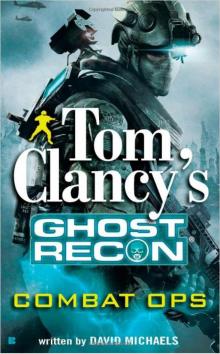 Combat Ops gr-2
Combat Ops gr-2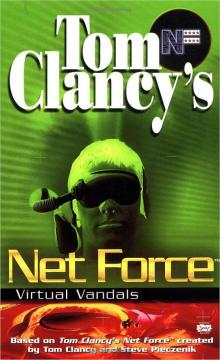 Virtual Vandals nfe-1
Virtual Vandals nfe-1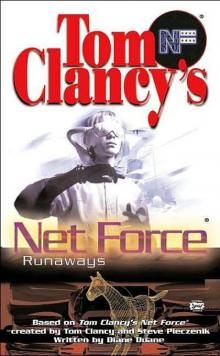 Runaways nfe-16
Runaways nfe-16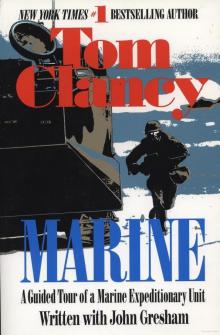 Marine: A Guided Tour of a Marine Expeditionary Unit tcml-4
Marine: A Guided Tour of a Marine Expeditionary Unit tcml-4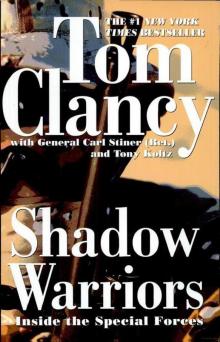 Shadow Warriors: Inside the Special Forces sic-3
Shadow Warriors: Inside the Special Forces sic-3 Jack Ryan Books 1-6
Jack Ryan Books 1-6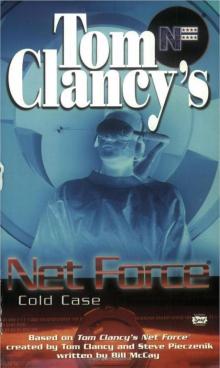 Cold Case nfe-15
Cold Case nfe-15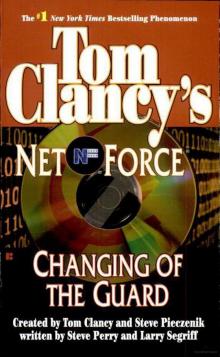 Changing of the Guard nf-8
Changing of the Guard nf-8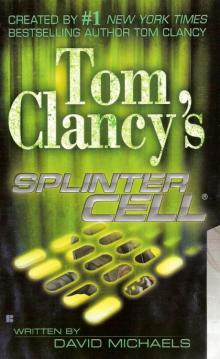 Splinter Cell sc-1
Splinter Cell sc-1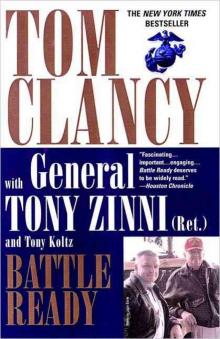 Battle Ready sic-4
Battle Ready sic-4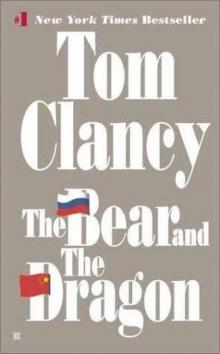 The Bear and the Dragon jrao-11
The Bear and the Dragon jrao-11 Fighter Wing: A Guided Tour of an Air Force Combat Wing tcml-3
Fighter Wing: A Guided Tour of an Air Force Combat Wing tcml-3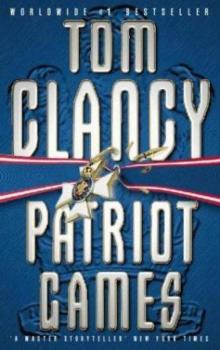 Patriot Games jr-1
Patriot Games jr-1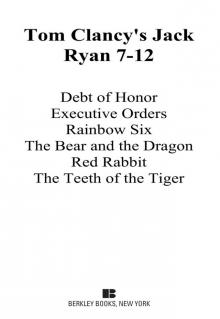 Jack Ryan Books 7-12
Jack Ryan Books 7-12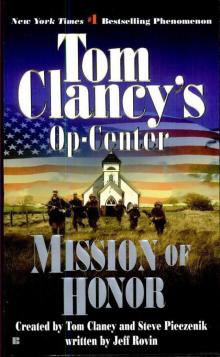 Mission of Honor o-9
Mission of Honor o-9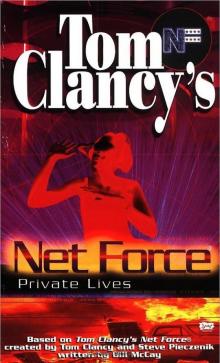 Private Lives nfe-9
Private Lives nfe-9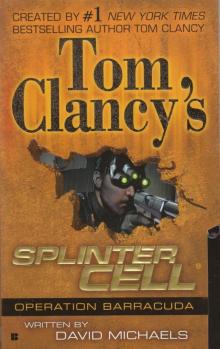 Operation Barracuda sc-2
Operation Barracuda sc-2 Cold War pp-5
Cold War pp-5 Point of Impact nf-5
Point of Impact nf-5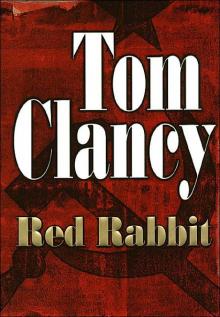 Red Rabbit jr-9
Red Rabbit jr-9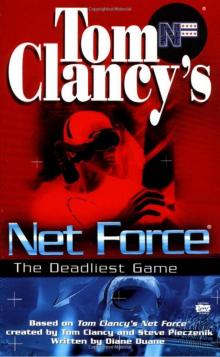 The Deadliest Game nfe-2
The Deadliest Game nfe-2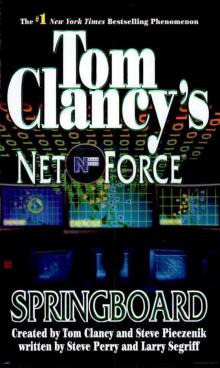 Springboard nf-9
Springboard nf-9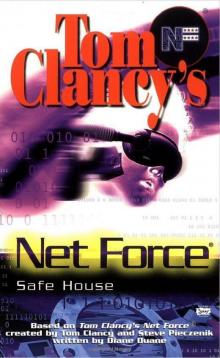 Safe House nfe-10
Safe House nfe-10 EndWar e-1
EndWar e-1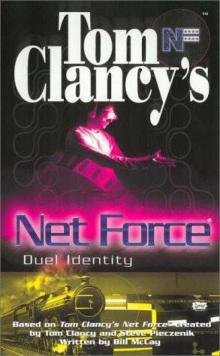 Duel Identity nfe-12
Duel Identity nfe-12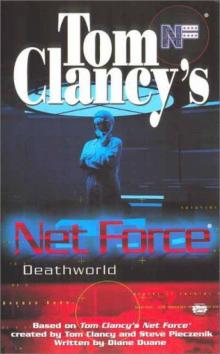 Deathworld nfe-13
Deathworld nfe-13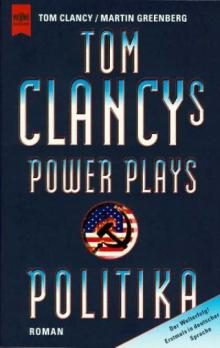 Politika pp-1
Politika pp-1 Rainbow Six jr-9
Rainbow Six jr-9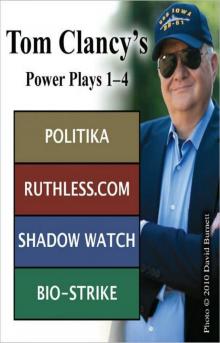 Tom Clancy's Power Plays 1 - 4
Tom Clancy's Power Plays 1 - 4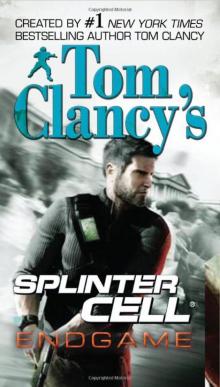 Endgame sc-6
Endgame sc-6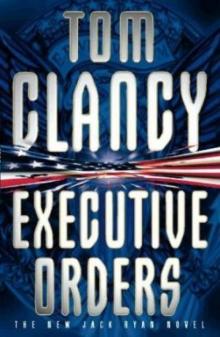 Executive Orders jr-7
Executive Orders jr-7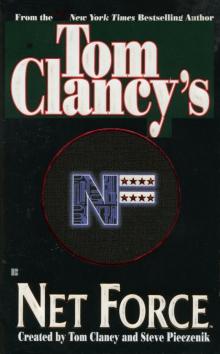 Net Force nf-1
Net Force nf-1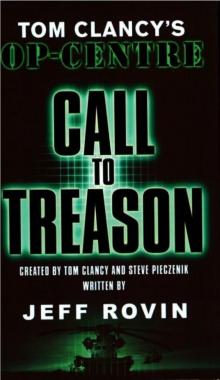 Call to Treason o-11
Call to Treason o-11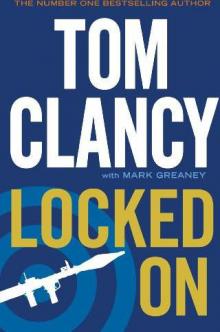 Locked On jrj-3
Locked On jrj-3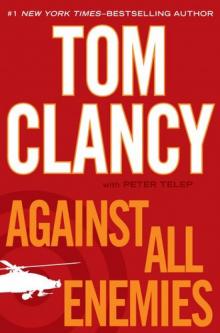 Against All Enemies
Against All Enemies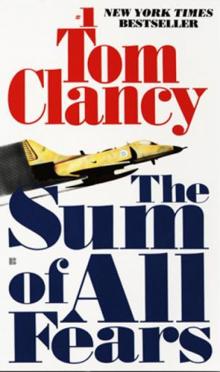 The Sum of All Fears jr-7
The Sum of All Fears jr-7 Sea of Fire o-10
Sea of Fire o-10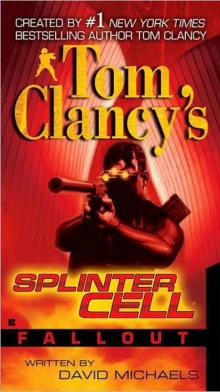 Fallout sc-4
Fallout sc-4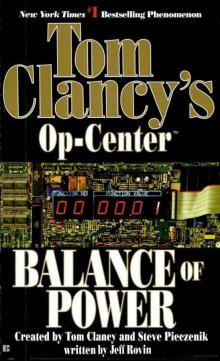 Balance of Power o-5
Balance of Power o-5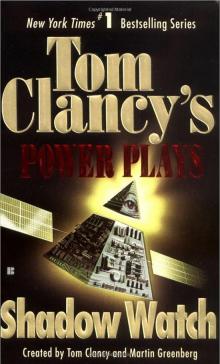 Shadow Watch pp-3
Shadow Watch pp-3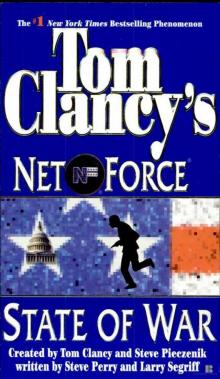 State of War nf-7
State of War nf-7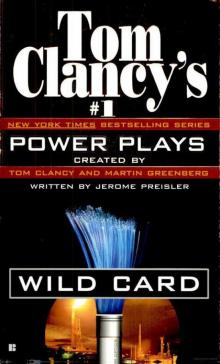 Wild Card pp-8
Wild Card pp-8 Games of State o-3
Games of State o-3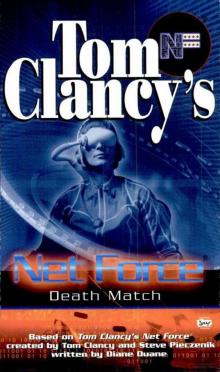 Death Match nfe-18
Death Match nfe-18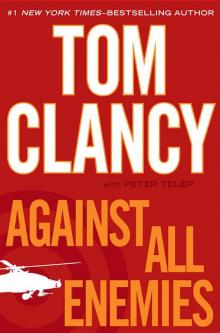 Against All Enemies mm-1
Against All Enemies mm-1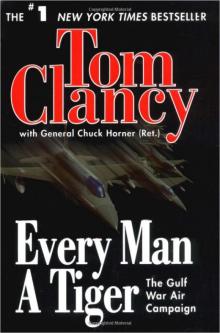 Every Man a Tiger: The Gulf War Air Campaign sic-2
Every Man a Tiger: The Gulf War Air Campaign sic-2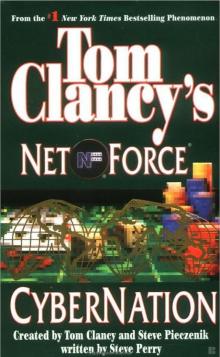 Cybernation nf-6
Cybernation nf-6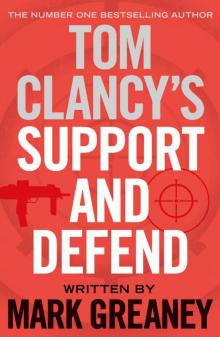 Support and Defend
Support and Defend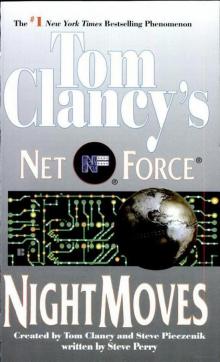 Night Moves nf-3
Night Moves nf-3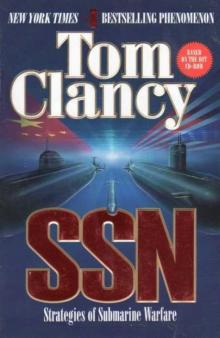 SSN
SSN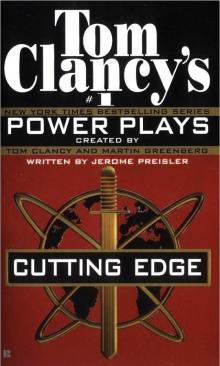 Cutting Edge pp-6
Cutting Edge pp-6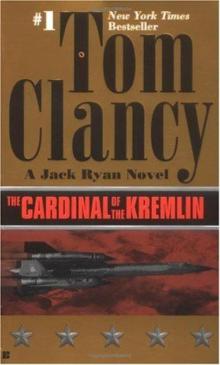 The Cardinal of the Kremlin jrao-5
The Cardinal of the Kremlin jrao-5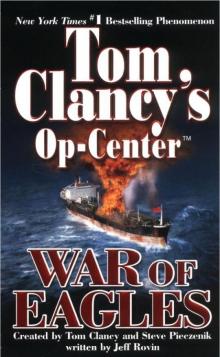 War of Eagles o-12
War of Eagles o-12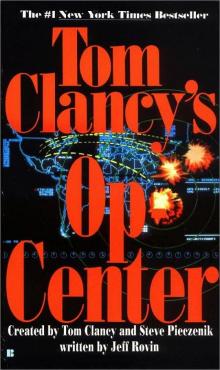 Op-Center o-1
Op-Center o-1 Mirror Image o-2
Mirror Image o-2 The Archimedes Effect nf-10
The Archimedes Effect nf-10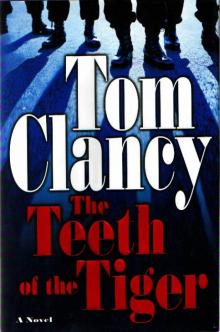 Teeth of the Tiger jrj-1
Teeth of the Tiger jrj-1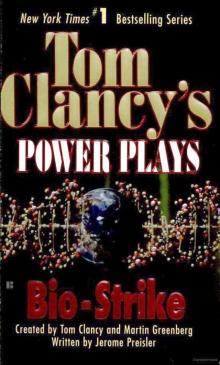 Bio-Strike pp-4
Bio-Strike pp-4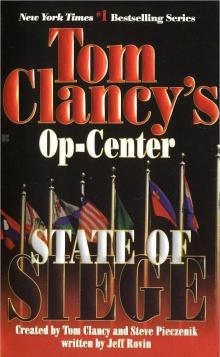 State of Siege o-6
State of Siege o-6 Debt of Honor jr-6
Debt of Honor jr-6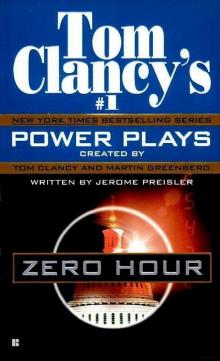 Zero Hour pp-7
Zero Hour pp-7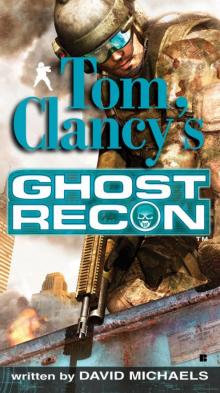 Ghost Recon gr-1
Ghost Recon gr-1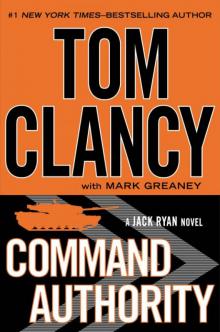 Command Authority jr-10
Command Authority jr-10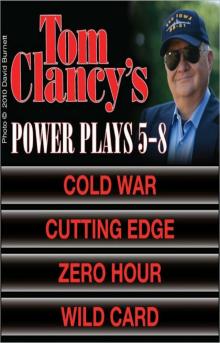 Tom Clancy's Power Plays 5 - 8
Tom Clancy's Power Plays 5 - 8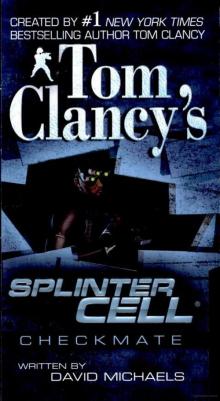 Checkmate sc-3
Checkmate sc-3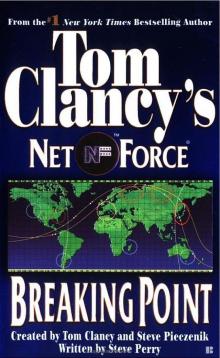 Breaking Point nf-4
Breaking Point nf-4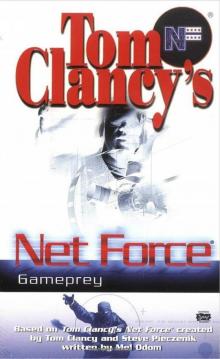 Gameprey nfe-11
Gameprey nfe-11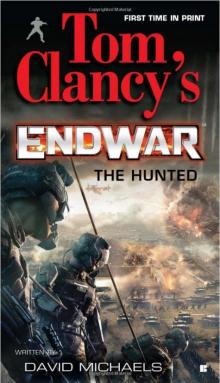 The Hunted e-2
The Hunted e-2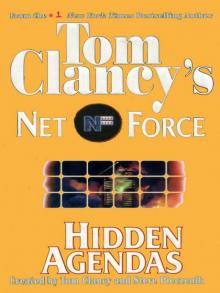 Hidden Agendas
Hidden Agendas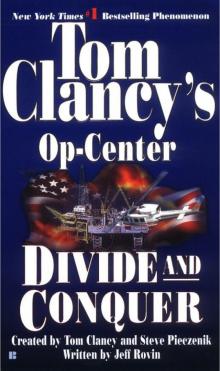 Divide and Conquer o-7
Divide and Conquer o-7